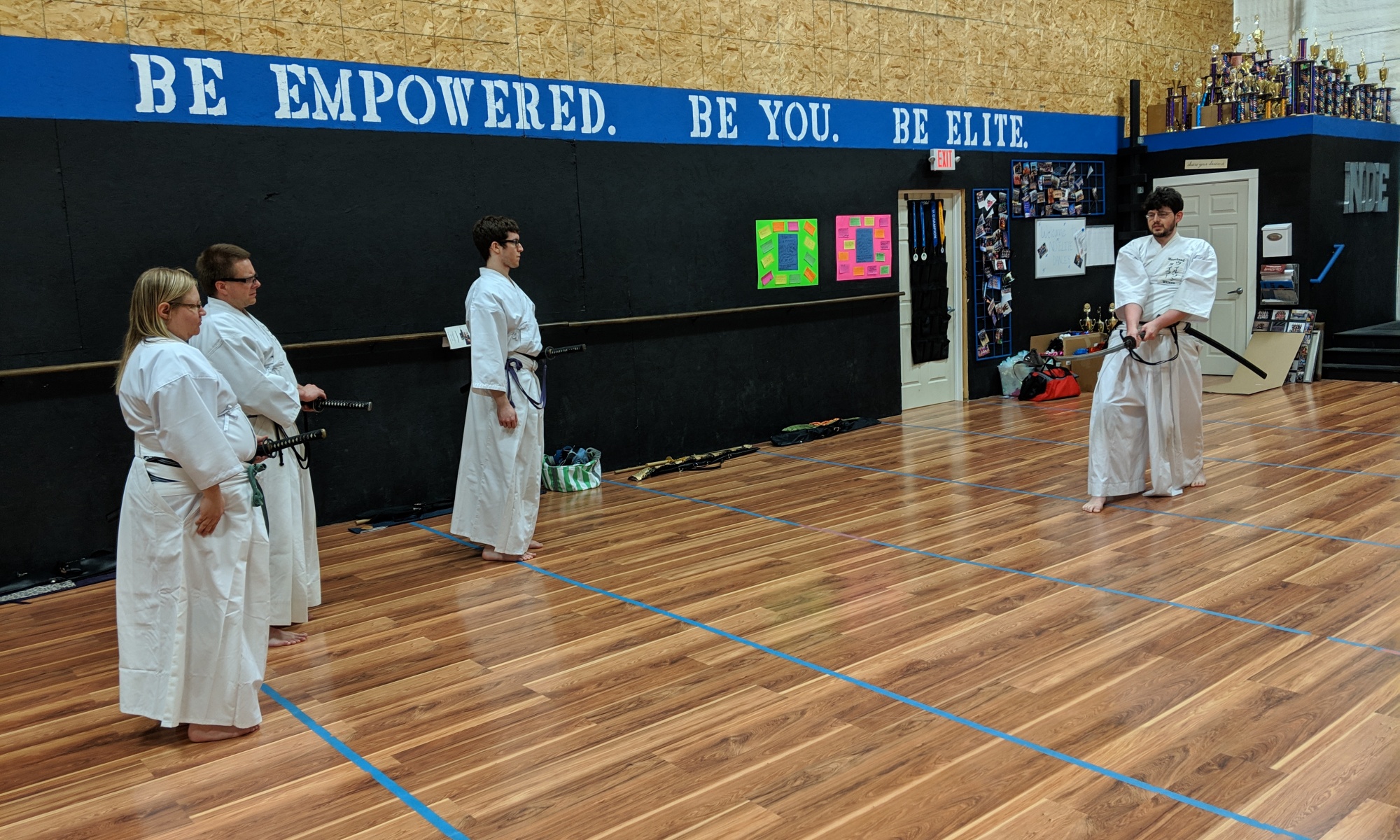Over the last few weeks, I’ve been having my students all “teach” a kata that they feel they know well.
We’ve been using the ZNKR Seitei iaido series, but I’ve done this in the past with our koryu Musoshindenryu as well.
It’s been a great experience both for myself and the rest of the dojo members as well as we switch roles and take turns showing the other members not only our unique style of teaching, but also the self-realization that comes with having to explain something as you’re doing it with specific attention to detail.

Methodology
Each student-teacher would have 10-15 minutes to self-practice and brush up on the kata, how they want to present it, and the kata-specific grading points found in the Seitei iaido manual. Then the Senpai would demonstrate the kata with the appropriate timing. Next, they would teach / demo more slowly pointing out specific points to watch for, foot positions, blade positions, etc. There would be a review of the grading points either from memory or the book itself. Then the Senpai would lead the group through the kata at least twice. During or before the Q/A, I would offer specific comments that were to add clarification or emphasize any additional specific points that were either relevant for grading or the performance of the kata. The senpai would lead the group through one more round as I observed, final comments, and then we’d move on to the next person to lead.
Every person took a turn, and I can safely say that every version of the methodology of how to teach a kata was as unique as the Senpai presenting it.

Takeaways
What I heard from everyone was:
- It was a good experience because it forced people to focus on the points and explain them as they’re doing them instead of just “going though the motions.”
- That focus really required specific though on footwork, positioning, angles, cuts, and all of the kihon that go into a kata.
- The grading points in the book were sometime more or less than what they’d believed for the specific kata.
- It was challenging.
What I noticed was:
- We all learn and teach differently – some by using more words and some by using/hearing less words combined with more actions. When I learned the kata originally from Takeda sensei in Japan, my “Budo Japanese” was pretty poor, and so I had to rely on learning from sight, visualization and emulation, correction, and repetition.
- There’s no “one way” to teach something or reach a specific point.
- My students focus on specific points in kata could be very different from my own. This isn’t a bad thing, just different. Points that I considered very critical to the execution of the kata were less emphasized by some Senpai, whereas they emphasized some things that I rarely did. I will learn from this and consider my methodology as I go forward.
- Kihon is extremely important. Specifically consistency in correct kihon. We will need to work on this a bit. Examples being cut and swing, chiburi, and noto.
- It was nice to be a student for a change.
I look forward to incorporating this type of practice more in the future as I think it’s a valuable way to mix things up a bit.


